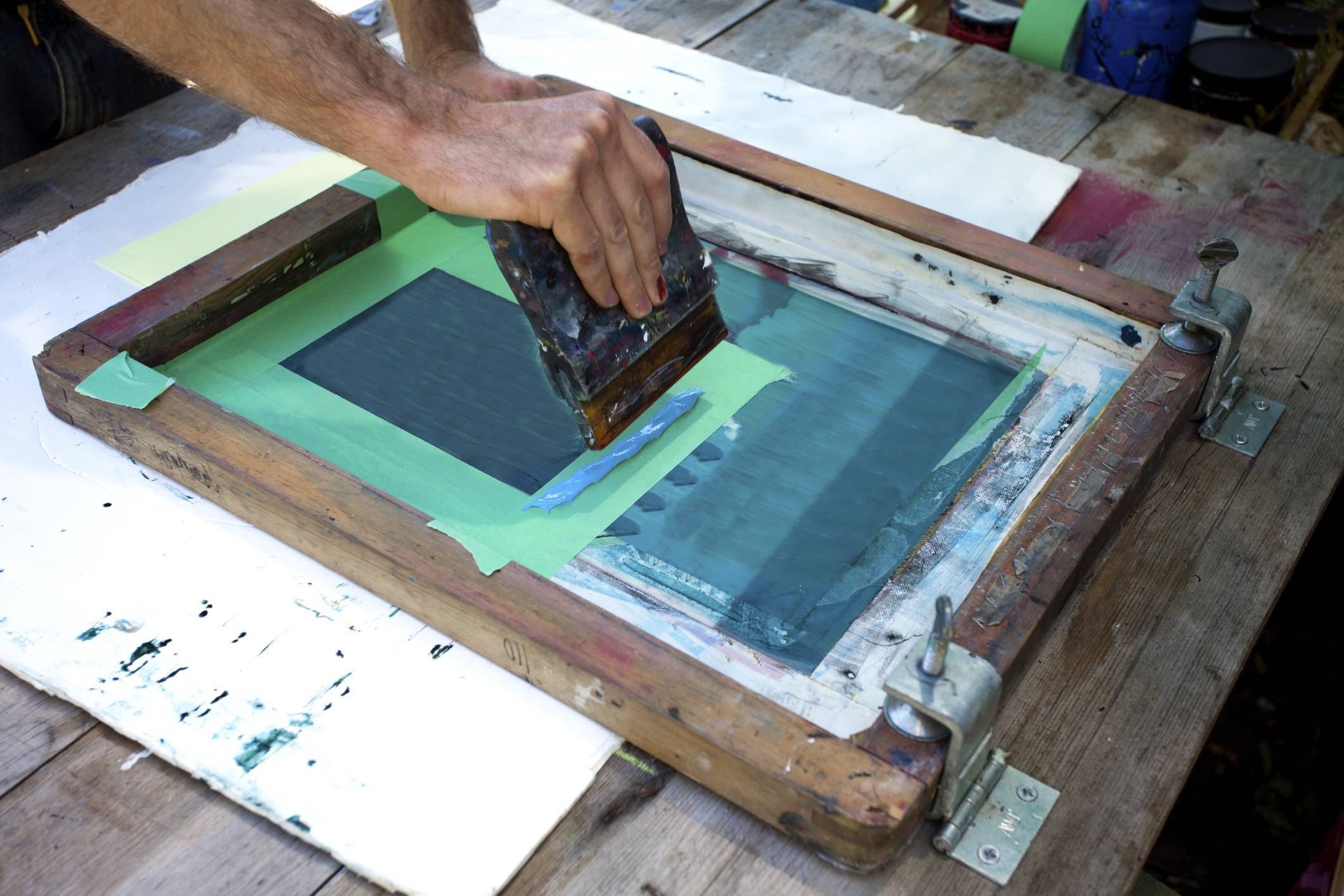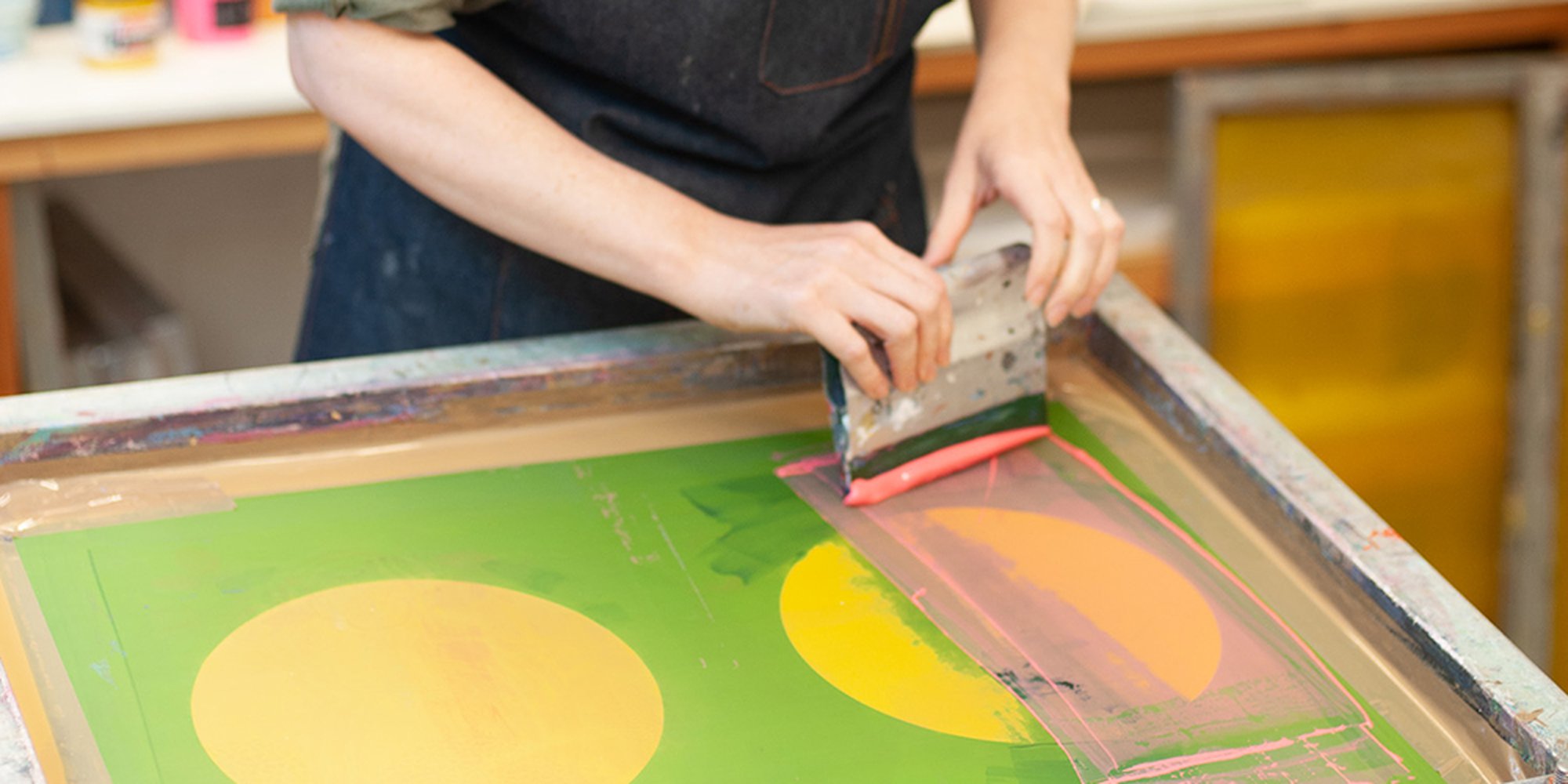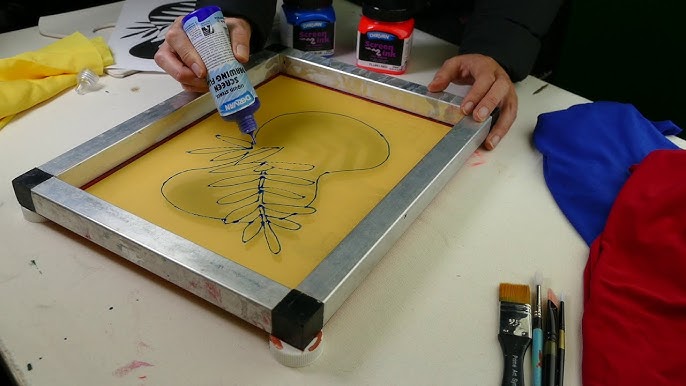Discover the Numerous Sorts Of Screen Printing Techniques for Your Following Job
Screen printing provides a diverse variety of strategies that can boost any kind of imaginative job. From conventional methods like serigraphy to modern-day innovations such as direct-to-garment printing, each approach has its unique advantages. Specialty options, consisting of environment-friendly and metallic inks, present also much more opportunities. Recognizing these methods can significantly influence the final end result. Nevertheless, the difficulty hinges on picking the most suitable technique for specific needs and wanted impacts. What factors should one take into consideration?

The Basics of Screen Printing
Although screen printing might appear complex, it is essentially an uncomplicated procedure that includes moving ink through a mesh screen onto various surfaces. The method starts with the production of a pattern, which specifies the design to be printed. This stencil is attached to a mesh screen, commonly made of polyester or nylon. When the pattern remains in location, ink is used to the screen and pressed via the mesh utilizing a squeegee, resulting in the desired pattern being published on the underlying product.
Screen printing can be carried out on a variety of substratums, including plastic, paper, and material, making it a flexible selection for various tasks. The process permits dynamic colors and elaborate layouts, making it preferred in industries such as marketing, art, and style. Understanding these essentials furnishes people with the fundamental expertise needed to discover advanced techniques in screen printing.
Typical Screen Printing Techniques
Typical screen printing techniques have been utilized for centuries, preserving the craftsmanship and artistry of this method. This strategy makes use of a mesh screen to move ink onto a substratum, such as material or paper, enabling for dynamic and long-lasting styles. The procedure starts with developing a stencil, which blocks certain areas of the screen to regulate where the ink will be applied.
One prominent technique is serigraphy, usually used for restricted editions and imaginative prints. One more is the usage of water-based inks, which are environmentally friendly and provide a soft feeling on textiles - 10:9 Design Screen Printing Texas. Furthermore, traditional techniques can consist of hand-operated printing, where craftsmens apply ink with a squeegee, ensuring precision and focus to detail
These techniques stay valued in the industry for their tactile quality and the one-of-a-kind appearances they generate, attracting both consumers and creators who appreciate the heritage of screen printing.
Digital Screen Printing Innovations
As the demand for faster production and customization in the printing sector has actually surged, electronic screen printing technologies have actually emerged as a game-changer. This modern technology mixes traditional screen printing approaches with electronic procedures, enabling for fast prototyping and complex layouts that were formerly hard to accomplish. One substantial development is the intro of direct-to-garment (DTG) printing, which assists in top quality, full-color prints on various textiles without the requirement for displays. Furthermore, innovations in ink formulations have actually caused eco-friendly choices that preserve dynamic colors while minimizing environmental effect. Making use of automated systems better simplifies manufacturing, decreasing labor costs and boosting precision. These technologies not just provide to tiny batch orders and individualized layouts however additionally enable for quicker turnaround times, making them suitable for businesses concentrated on conference consumer needs in a fast-paced market. Digital screen printing, as a result, stands for a necessary development in the domain of printing techniques.
Specialty Screen Printing Techniques
Discovering specialized screen printing techniques exposes a diverse selection of techniques that push the borders of creative thinking and performance in the printing industry. Among these, glow-in-the-dark inks supply an unique aesthetic result, making layouts come active in low-light conditions. Metal inks, recognized for their glittering coating, add a touch of high-end to published products. One more innovative technique is discharge printing, which gets rid of color from the textile rather than including ink, causing a soft, classic feel. High-density printing develops an elevated structure on the surface area, improving responsive engagement. In addition, water-based inks are acquiring appeal for their lively shades and minimized ecological effect. Each of these specialized methods deals with details layout demands, allowing artists and brands to produce standout products that reverberate with their target markets. By leveraging these methods, companies can elevate their screen printing jobs to new elevations, making sure remarkable perceptions.
Eco-Friendly Screen Printing Options
Eco-friendly screen printing choices are getting traction as the sector moves towards sustainability. Sustainable ink options and making use of biodegradable products are crucial components in minimizing the environmental effect of the printing procedure. By taking on these practices, screen printers can add to a much more sustainable future while preserving high-quality outcomes.
Lasting Ink Choices

Biodegradable Products Usage
As the screen printing industry evolves, the unification of naturally degradable materials is coming to be progressively crucial for ecologically aware practices. Makers and developers are now checking out inks and substratums made from all-natural, sustainable sources that decay more efficiently than traditional counterparts. These naturally degradable choices decrease plastic waste and lessen ecological impact, lining up with the expanding demand for sustainable products.
Usual instances consist of water-based inks and natural cotton fabrics, both of which reduce dangerous chemicals and promote eco-friendliness. Brand names that take on these products commonly enhance their market appeal, bring in customers who prioritize sustainability. As recognition of ecological concerns remains to climb, the change in the direction of naturally degradable products in screen printing is likely to obtain energy, cultivating a greener industry requirement.
Choosing the Right Method for Your Project
How can one establish the most suitable screen printing method for a specific task? The decision rests on a number of variables, including the material to be published on, the complexity of the design, and the desired production volume - 10:9 Design Abilene. As an example, direct-to-garment printing is perfect for elaborate designs with various colors, while standard screen printing excels for larger runs of simpler graphics
In addition, factor to consider of the end-use of the printed product is essential. For exterior applications, strategies that supply resilience and weather condition resistance, such as plastisol ink, might be preferred. Alternatively, environmentally-conscious jobs might benefit from biodegradable products or water-based inks.
Inevitably, comprehending the project's distinct requirements permits an educated option, guaranteeing both visual allure and useful durability. By reviewing style complexity, product compatibility, and manufacturing range, one can efficiently select the most suitable screen printing technique to satisfy their job's goals.
Frequently Asked Questions
What Is the History of Screen Printing?
Screen printing came from in old China around 1000 AD, progressing through Japan and Europe. By the 20th century, it ended up being popular in business art and fashion, revolutionizing how layouts were produced and distributed internationally.

How Do I Prepare Art Work for Screen Printing?
To prepare art work for screen printing, one need to assure high resolution, utilize an ideal color mode, create separate layers for every shade, and convert text to lays out, ensuring compatibility with the printing procedure and desired result.
What Materials Are Best for Screen Printing?
The most effective products for screen printing include top notch inks, sturdy screens, and ideal substrates like cotton, polyester, or blends. In addition, using suitable solution and squeegees can improve the printing procedure and results.
Can I Evaluate Print in the house?
Yes, screen printing at home is feasible. With the appropriate products, configuration, and methods, people can create high-quality prints. However, cautious consideration of office and devices is important for effective results.

What Are Usual Blunders in Screen Printing?
Usual errors in screen printing include improper exposure times, insufficient ink uniformity, misalignment of screens, inadequate cleaning of materials, and neglecting to check prints. These mistakes can jeopardize the high quality and accuracy of the end product.
Screen printing might seem complicated, it is essentially an uncomplicated process that entails moving ink through a mesh screen onto numerous surfaces. As the need for faster manufacturing and personalization in the printing sector has surged, electronic screen printing advancements have actually arised as a game-changer. Checking out specialty screen printing approaches reveals a varied array of methods that push the limits of creative thinking and capability in the printing market. The ideal materials for screen printing consist of premium inks, sturdy screens, and suitable substrates like cotton, polyester, or blends (10:9 Design Screen Printing Texas). Typical mistakes in screen printing consist of inappropriate direct exposure times, inadequate ink uniformity, imbalance of screens, not enough cleaning of materials, and ignoring to check prints